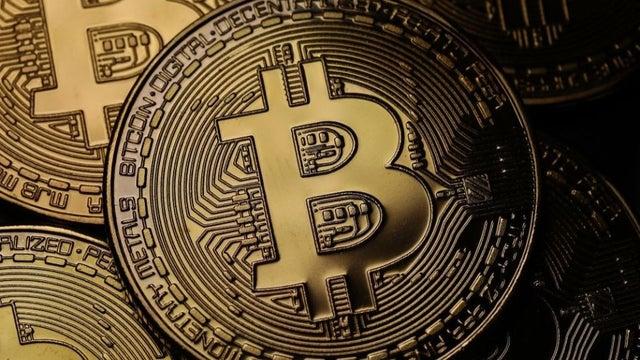Over the last few weeks we’ve been witnessing a historic surge in the Bitcoin price, a seemingly unstoppable ride that the mainstream media headlines can hardly keep up with. Especially following the news that Elon Musks’ Tesla bought .5 in the cryptocurrency, sending it to new record highs, most of the media coverage appears to be focused on all the wrong things. Part fear-mongering over the many “risks” of bitcoin, part pleading for governments to step in and regulate the entire crypto sector, and part bitterly dismissing bitcoin’s meteoric rise as bubble, most analysts and pundits seem to take the entire story out of context, or more often, to miss the forest for the trees. We also saw a lot of well-respected, “established” investors and fund managers chime
Topics:
Claudio Grass considers the following as important: 6a) Gold & Bitcoin, Bitcoin, Claudio Grass, Cyber-attacks, digital vs physical, Economics, Featured, Finance, Gold, Monetary, newsletter, speculation vs saving, taking-down the grid, Thoughts, transition period, Uncategorized
This could be interesting, too:
investrends.ch writes Welche Rolle spielen gehebelte Produkte beim jüngsten Einbruch der Krypto-Währungen?
investrends.ch writes «Die Nerven liegen derzeit blank»
investrends.ch writes Bitcoin fällt unter 90 000 US-Dollar
investrends.ch writes Bitcoin zieht deutlich an

Over the last few weeks we’ve been witnessing a historic surge in the Bitcoin price, a seemingly unstoppable ride that the mainstream media headlines can hardly keep up with. Especially following the news that Elon Musks’ Tesla bought $1.5 in the cryptocurrency, sending it to new record highs, most of the media coverage appears to be focused on all the wrong things. Part fear-mongering over the many “risks” of bitcoin, part pleading for governments to step in and regulate the entire crypto sector, and part bitterly dismissing bitcoin’s meteoric rise as bubble, most analysts and pundits seem to take the entire story out of context, or more often, to miss the forest for the trees.
We also saw a lot of well-respected, “established” investors and fund managers chime in this cacophony of attacks, criticisms and detractions. Dire warnings of a huge bubble that will crush small, inexperienced bitcoin investors have been on the rise once again, as were all kinds of arrogant and patronizing comments about those “foolish amateurs” that really don’t know the first thing about investing and understand even less about this “made up money” they are pouring all their capital into. Really, it all sounds like an exact repeat of the same predictions and devastating prophesies we heard back in 2016, during the last crypto rally. As you might recall, the year after that, all bitcoin critics were celebrating the cryptocurrency’s demise, congratulating each other on their astute analyses and felt totally vindicated. The bubble had burst, bitcoin was dead and buried. It was just the tulip mania of our time and the “grown-ups” were right all along.
And yet, here we are a few short years later and bitcoin isn’t just back, but it’s bigger than ever before. Not only has the price reached unprecedented highs, but its adoption rate is also accelerating dramatically. Institutional investments are rushing in, as are new, small crypto investors, while early adopters and those who “kept the faith” during the last pullback are now raking in incredible returns. As for the naysayers and the detractors, they are still sticking to their guns: Despite all the mounting evidence to the contrary, they think it’s a bubble, again.
Of course, there can be darker incentives behind the public disparagement of the whole crypto space, as it does threaten to destabilize entire structures and industries that have for decades, if not centuries, been at the core of political and monetary power. However, we must also recognize that a lot of this criticism comes from an honest fear of the unknown. There’s a good dose of technophobia in there too, as many of those who are hostile to crypto in general do not actually understand the underlying technology. They probably also don’t understand the underlying forces and the history of fiat money either. That is why they’ll confidently call bitcoin and its peers “made up money”, but fail to spot the irony in holding dollars and euros instead. Another major misunderstanding arises from mistaking decentralization for lawlessness and chaos. Without comprehending how the blockchain works, the unparalleled levels of security and transparency it provides and the unprecedented freedom and privacy it offers, many critics simply feel terrified at the idea that there is no central control, no single authority and no “off switch”.
Finally, even among those who understand the basics of the technology, there is often this instinct that the “masses” cannot be allowed to operate freely without rules and checks and guidance. Many “professionals” with very expensive degrees, very important jobs and very limited exposure to the “99%” tend to have such a grim view of the rest of humanity. There’s this idea that harkens back to centuries past and extends way past financial matters, to politics and to social order too, that the average worker, saver, taxpayer, citizen, simply does not know what is best for him. Even worse, taken as a group, there is no way the “hoi polloi” can cooperate efficiently and productively, establish truly free markets, let alone govern themselves. That way madness lies and disaster is certain and inevitable. So, their betters have a duty to step in and ensure things are done the right way, which always happens to be their way.
No matter how one feels about bitcoin and crypto at large, the most important thing to remember is that this surge should not be examined in isolation, but as part of something bigger. It is inextricably linked to a much larger shift towards decentralized systems and a mass movement to reclaim some kind of control and autonomy over individual decisions and actions. It started years ago, but it was supercharged by the covid crisis and the countless restrictions, bans and limitations we saw come into force in 2020. A lot of people found themselves in impossible situations, through no fault of their own, and there was nothing they could do about it. On top of a year of social isolation, many formerly productive and responsible citizens were also facing unemployment, financial ruin, often imminent homelessness, and a sudden dependence on state handouts to put food on the table. The urge to take back control over their own lives was more than understandable, it was a survival instinct.
A lot of these forces and trends can also be found behind the recent precious metals rally too, but also behind the growth in long-term investors. Of course, like with bitcoin, there are different ways one can look at gold. Focusing on short-term price swings and trying to ride a price rally can only ever achieve short-lived and unsustainable returns. Also, in both cases, missing the forest for the tree can prove a very costly mistake. If you only care about the speculative aspects of gold or crypto, it is very easy to forget what purpose they actually serve and to miss out on those benefits entirely. For example, obsessing over the price of bitcoin and following the news of the latest huge bank that entered the market can distract people from the fact that bitcoin is supposed to be all about decentralization, privacy and individual control. Similarly, gold and silver rallies can also cause people to forget what these assets are actually for. To the speculator or the naive investor, a gold ETF might be the same thing, or even better, than actual, physical gold, and they’ll gladly hold that, all the while missing out on all the real advantages and protections that a physical investment offers.
If we look past speculators and those seeking short term profits, the only real reason to hold physical gold and to save in it is precisely this urge to control one’s own future and to remove external risks that threaten to derail it. It is the clear understanding that no central authority, be it the government or the central bank, can ever know what is actually best for us individually better than we do ourselves.
Therefore, never forget that physical gold and silver stand on its own – they don’t even depend on a network.
“Those entrapped by the herd instinct are drowned in the deluges of history. But there are always the few who observe, reason, and take precautions, and thus escape the flood. For these few gold has been the asset of last resort.”— Antony C. Sutton
Claudio Grass, Hünenberg See, Switzerland
This work is licensed under a Creative Commons Attribution 4.0 International License. Therefore please feel free to share!
Tags: Bitcoin,Claudio Grass,cyber attacks,digital vs physical,Economics,Featured,Finance,Gold,Monetary,newsletter,speculation vs saving,taking-down the grid,Thoughts,transition period,Uncategorized






